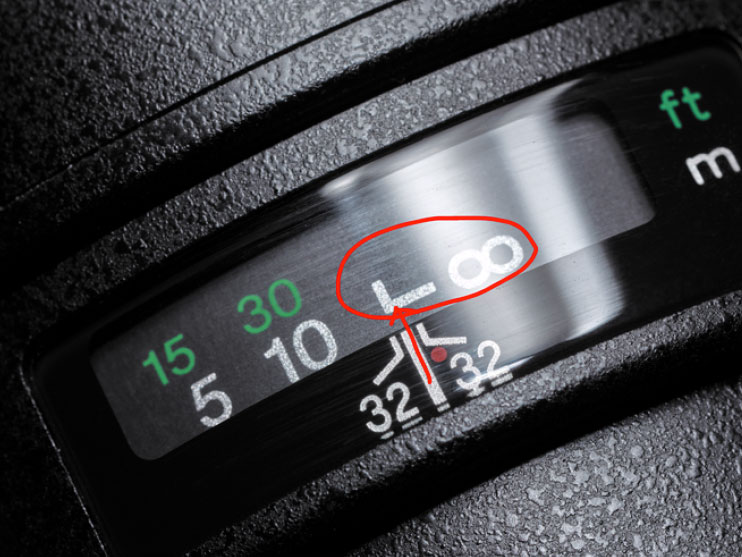It is hard to focus on stars at night. If you’ve ever tried to photograph the Milky Way, no doubt you’ve noticed how hard it actually is. We have another more detailed article which is aimed at helping you understand the process of focusing to infinity here.
You may have also had other photographers tell you to ‘focus to infinity’ and wondered how to do that. If it’s daytime, it’s easy to point your camera at a distant subject and let the camera autofocus, locking on to infinity. Night time is another matter.
If you are lucky your lens will have an infinity symbol (looks like a figure 8 laying on it’s side). To ensure sharp focus at night, put your lens on MF / M (manual focus), then move the focal ring to the line just before the infinity symbol. Note I said just before the infinity symbol. If you’ve gone as far as your lens will allow, then you’ve gone too far.
Now you are ready to photograph stars.
The Infinity Symbol
With improvements to autofocus over the years, many camera companies are starting to take away the infinity stops. If you don’t see an infinity symbol when you turn the focus ring on your lens, chances are it may not have one. In this case you’ll need to keep your camera on Autofocus and try focusing on a light in the distance. For example, a distant building that has it’s light on. Or if you can see the moon, try focusing on the very edge of it.
Once your camera locks focus, turn the lens to MF / M (manual focus) making sure you don’t touch or move the focus ring there after. This way the focus will be set to infinity, ready for sharp shots of the stars above.
So remember the infinity rule as you learn how to focus on stars at night. Either set your lens to manual focus and move the focus ring just before the infinity symbol. Or auto focus, aim at a point way off in the distance. Once you have achieved a good focus, turn the auto focus to manual focus. Do not touch the focal ring as you set up and take the shot.

